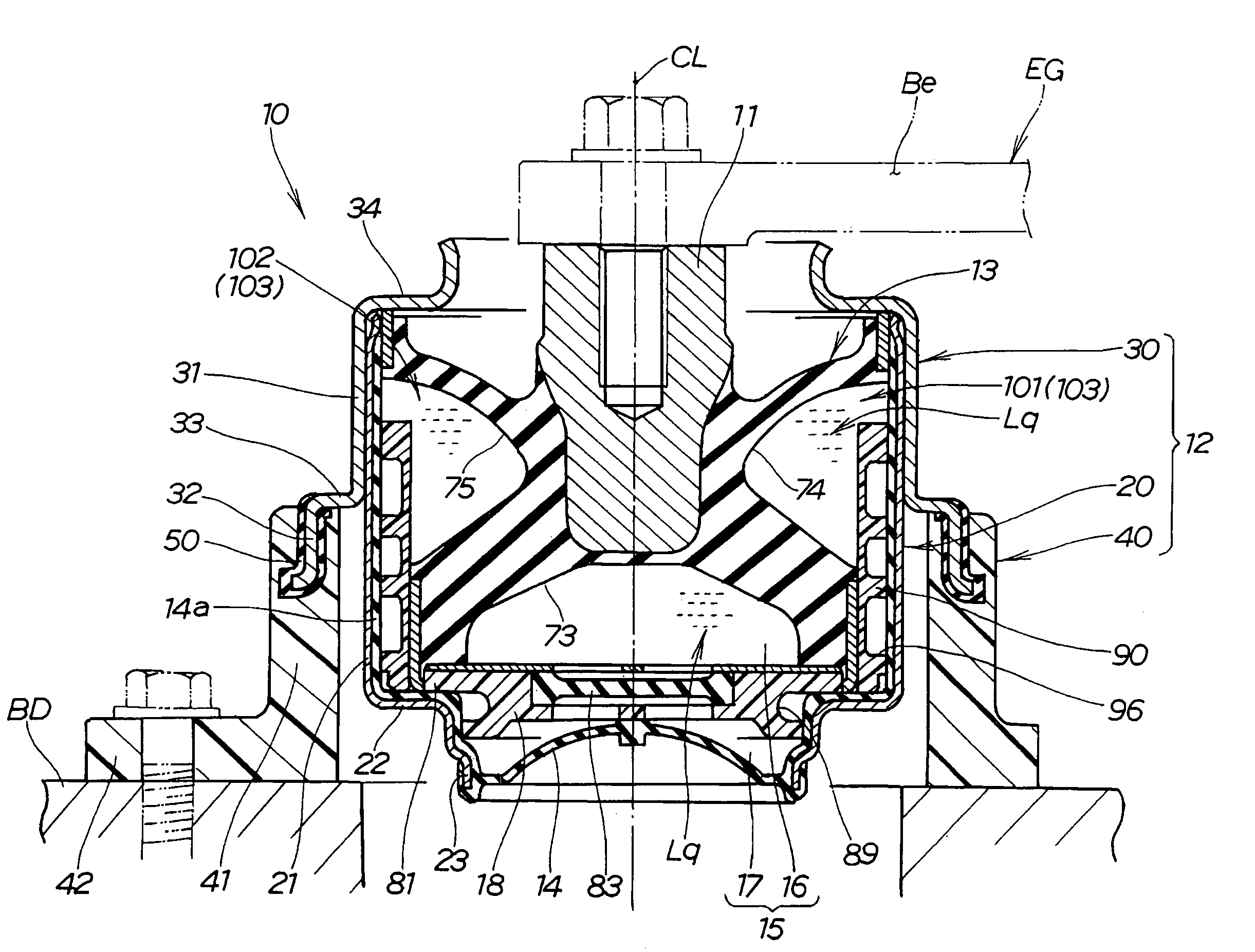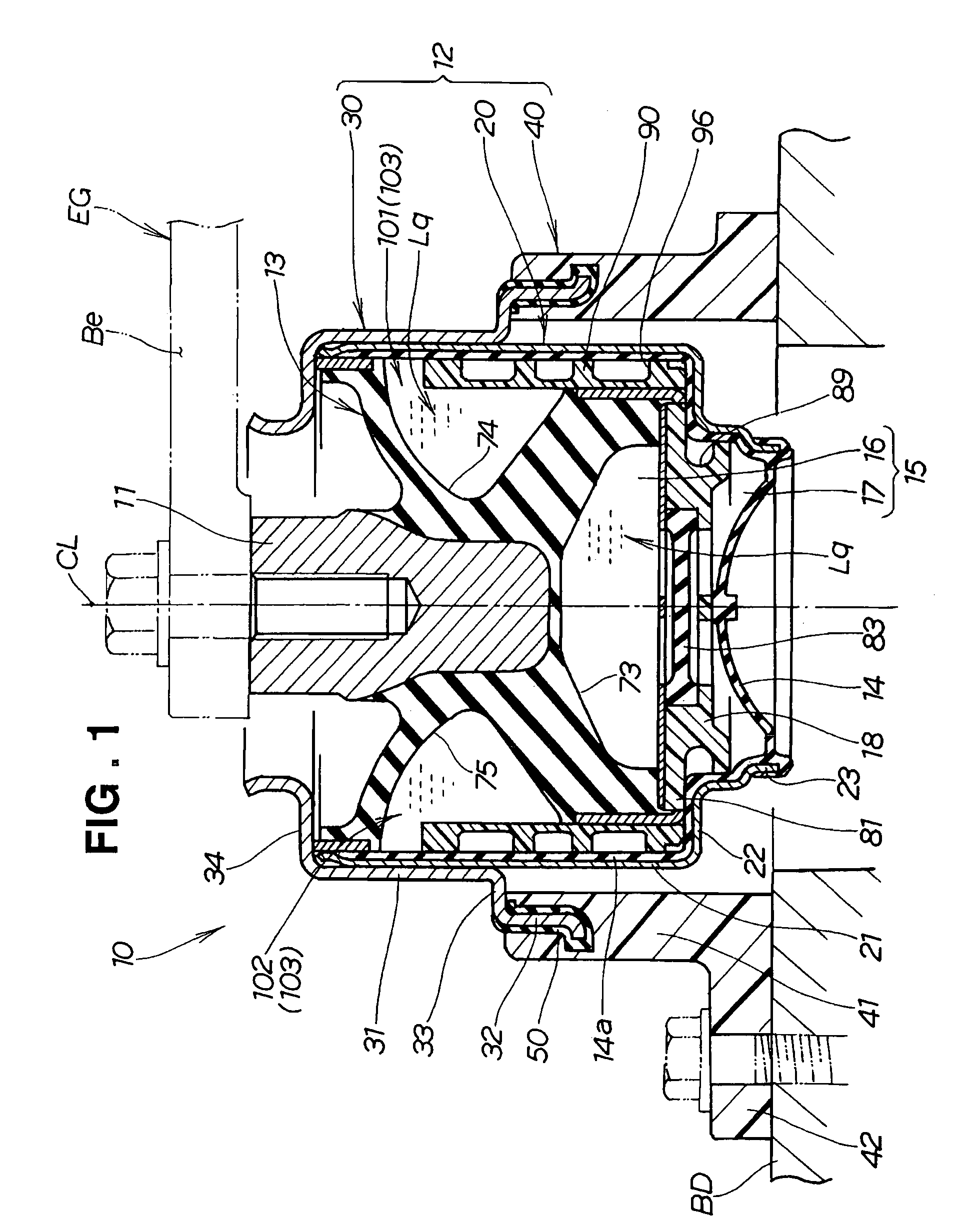Vibration isolation device
a technology of vibration isolation and plastic brackets, which is applied in the direction of shock absorbers, machine supports, other domestic objects, etc., can solve the problems of inability to ensure the reliability of the press-fit engagement between the plastic bracket and the metal cap, the plastic bracket may be damaged or broken, and the cost of man-hours is increased
- Summary
- Abstract
- Description
- Claims
- Application Information
AI Technical Summary
Benefits of technology
Problems solved by technology
Method used
Image
Examples
Embodiment Construction
[0033]Referring now to the drawings and FIG. 1 in particular, there is shown in cross section a vibration isolation device 10 according to a first embodiment of the present invention. The vibration isolation device 10 in the illustrated embodiment is disposed between a body BD (as a support body) of a motor vehicle and an engine EG (as a vibratory source) of the motor vehicle for supporting the engine EG on the vehicle body BD in such a manner that vibration generated from the engine EG while running can be efficiently absorbed by the vibration isolation device 10 to thereby suppress transmission of the vibration from the engine EG to the support body BD. The illustrated vibration isolation device 10 is of the liquid-filled type.
[0034]As shown in FIGS. 1 and 2, the liquid-filled vibration isolation device 10 generally comprises a first attachment member 11 for attachment to the engine EG, a second attachment member 12 of tubular shape for attachment to the vehicle body BD, an elasti...
PUM
 Login to View More
Login to View More Abstract
Description
Claims
Application Information
 Login to View More
Login to View More - R&D
- Intellectual Property
- Life Sciences
- Materials
- Tech Scout
- Unparalleled Data Quality
- Higher Quality Content
- 60% Fewer Hallucinations
Browse by: Latest US Patents, China's latest patents, Technical Efficacy Thesaurus, Application Domain, Technology Topic, Popular Technical Reports.
© 2025 PatSnap. All rights reserved.Legal|Privacy policy|Modern Slavery Act Transparency Statement|Sitemap|About US| Contact US: help@patsnap.com



